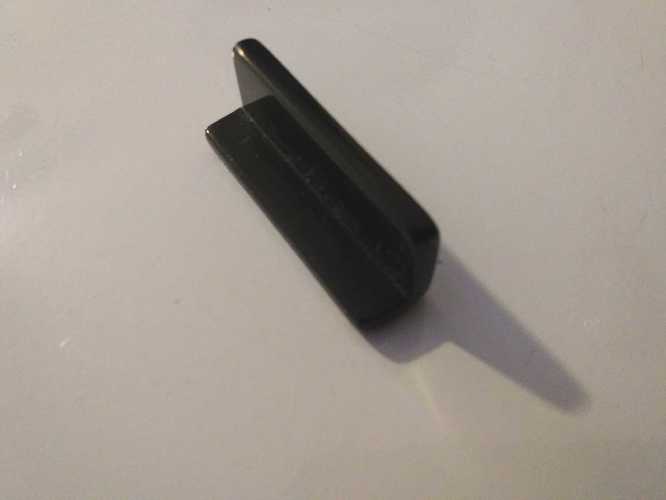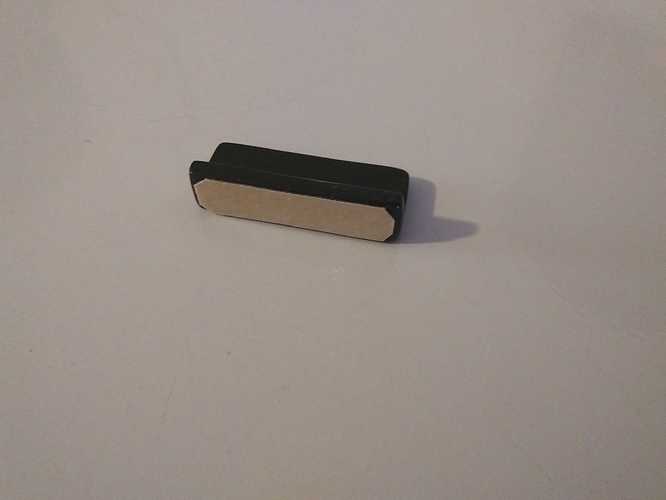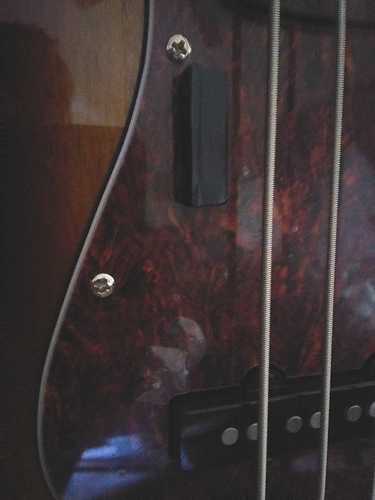Any tips to help improve string jumps? Being a relative noob, especially being not able to practice for 4 months after shoulder surgery, some songs I try to play have some difficult (for me) string jumps.
I find if I’m playing on the A or D string while my thumb is resting on the pickup, the jumps go fairly well. But if I’m playing on the E string with my thumb floating & then have to play some short quick section on the A, D or G string it all falls apart. It’s like my mind gets confused where my plucking fingers are & where to go.
Go Slow.
Isolate.
Repeat.
Repeat above.
Good exercises in the lessons for this.
Also as you learn songs you will be practicing it. If a certain jump gives you grief, start a note or two before it, and go to a note or two after and repeat it both up and down slowly. If you make mistakes, go even slower. Speed up only when you can do without error.
Use a metronome to keep your speed.
At least this is what I do.
I will try that. Thanks.
Why is your thumb floating while you’re playing the E string? You could rest it on the pickup while playing the E string, and rest it on the E string while playing the A, D and possibly even the G string. Crossing or jumping strings might be easier with consistent anchoring.
Sorry my bad because I didn’t describe that well. What I meant was my thumb is resting on the pickup when I play on the E string but my tendency is to move it & rest it on the E string when I play on the A or D because my thumb keeps the the E string muted for me.
That may or may not be right & might be what’s contributing to the problem. I’m open to any advice that might help me get better at this.
Oh that is ‘right’, at least for me, some don’t do that and are good at muting with their left hand instead and they keep their thumb in one place. Neither is wrong.
I actually move my thumb down the strings all the way to D and back, depending on how fast etc.
Yeah, I do that too, although I try not to move my thumb past the A string. It’s a valid muting technique. Guess you’re gonna have to practice some more, @erniehaak 
You might as well consider using the floating thumb technique @PamPurrs introduced to me. Doing this your movement is even more consistent and muting is happening passively on all lower strings.
I think a lot of bass teachers want you to get into anchoring your thumb a string above what you’re plucking, but the expectation at the beginning should be to rest it on the pickup and keep 'er there. Josh is really the only one I’ve seen who comes out and says this is fine and you can absolutely do it for the tenure of your bass career, if you want. I know several players who have all anchored on pickup and pickup, only. Especially metal players who work fast and furious and have other methods of muting.
I personally had a full month of bass playing (and a few years of guitar playing) under my belt before the humming of the sympathetic strings was too much for my ear to bear, and I was moved to (and capable of) trying to change my thumb position up and down the strings as I played. Don’t think you’re on a time limit with this. As the others who’ve posted before me said – take it slow and you’ll learn fast.
That’s not always necessary. You can rest on the E string while plucking the D string, because your plucking fingers are going to automatically mute the A string anyway.
It all depends on the sequence of notes you’re playing. If it’s a lot of jumping between A and D, then rest on the E string. If it’s just A string, then rest on pickup or E.
I think you just need more practice. I created a thread a while back with a bunch of exercises/warmups, there’s plenty of string crossing and skipping there. Take a look, maybe some of them would help you too.
There is a saxophonist (really good one) called Grace Kelly. I took a class with her and Leo P virtually a while ago. She told a story of when she was at Berklee that her professor/mentor/whoever it was came by the room she was practicing in. She was embarassed as she thought she was sucking extra well that day. The prof told her ‘if I hear you practicing and it sounds good, then you aren’t practicing hard enough’.
When I first started moving my thumb down off the pickups, it would end up deep in between the strings. It felt like little Jimmy who fell down the well. I thought I was terrible and woudl never get it right. Then one day without me noticing that thumb just started doing it right (all on its own!).
There is a great quote by someone, forget who, Coltrane or Rollins or someone…“If you are thinking about it, your are practicing, and when you stop thinking about it, that is when you are playing” - paraphrasing cause I am too lazy to look up the exact quote.
Net/net, it all takes time and patience. Do things that you are capable of, keep trying things that you are not good at, but don’t keep doing them if they are too hard, just keep coming back to them again and again and one time it will click.
Really? ![]()
This statement could not be more accurate. I used to think about my thumb position in the beginning but now he just moves where it needs to be instinctively. Trick is to practice string skipping and muting with your thumb slowly and then gradually increase the speed.
studybass.com (it’s free) has a feature that lets you create your own practice routines. i built a daily practice that concentrates on the basics that we all need - muting, string crossing, alternating fretting fingers, etc. just go to the basics section, find what you want to work on like string crossing, pick some of the practice exercises (there’s 4 of them for string crossing, one exercise per string) and add them to your practice. you can vary the speed of the exercises, start slow.
It comes down to muscle memory, which comes from practice. I don’t even think about it anymore, my plucking/picking hand just magically lands on the same string that my fretting hand is on.
I can hardly wait until I get to that point in my quest to play bass. In the meantime I’ll just practice & practice & get as much help from the experienced players as I can. Thanks.
You’ll get there!
wait you must…practice you shall need

You will get there just don’t give up and keep practicing.
At least with the B2B course you are playing along to backing tracks right from the beginning and this takes the boredom out of your sessions.
Gotta love that course.
When I began learning to play bass I tried a few muting methods for the plucking hand. The one with the floating thumb, the one with the ring and little finger resting on the strings. What I found that worked best for me and gave me the cleanest sound was moving up a string with my thumb as I move from string to string. When I play on the E String I rest my thumb on the pickup or one of these finger rests I made. It sticks to the pickguard (and it never comes off) with two sided tape. I use the rest on my Jazz basses mostly. It allows me to play easily between the neck and the pickup. When I play on the A String I move my thumb to the E String, It mutes that string. When I play on the D String I move my thumb to the A String, it mutes the A & the E String. Now most bassists will not move their thumb from this point the will play the G String and bring the finger back to the D string to keep it quiet and do this as they swap from index to middle finger playing. I found this works okay but it still left a bit of noise in there that I could hear while playing. I then began moving my thumb up and resting it on the D string while playing the G String. Total quiet from that point. What this also does is make switching from 4 string to 5 string effortless. By the way you can purchase thumb rests but most will require screwing into the bass. The ones I made can be moved around till you find the right spot for your playing and they can be removed without any damage to the bass.




